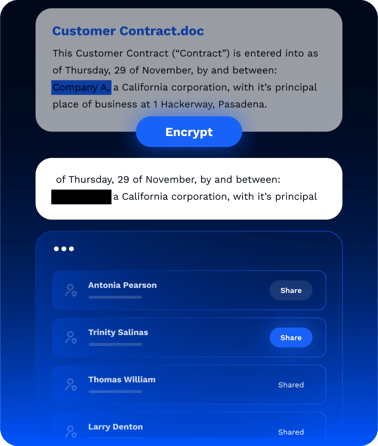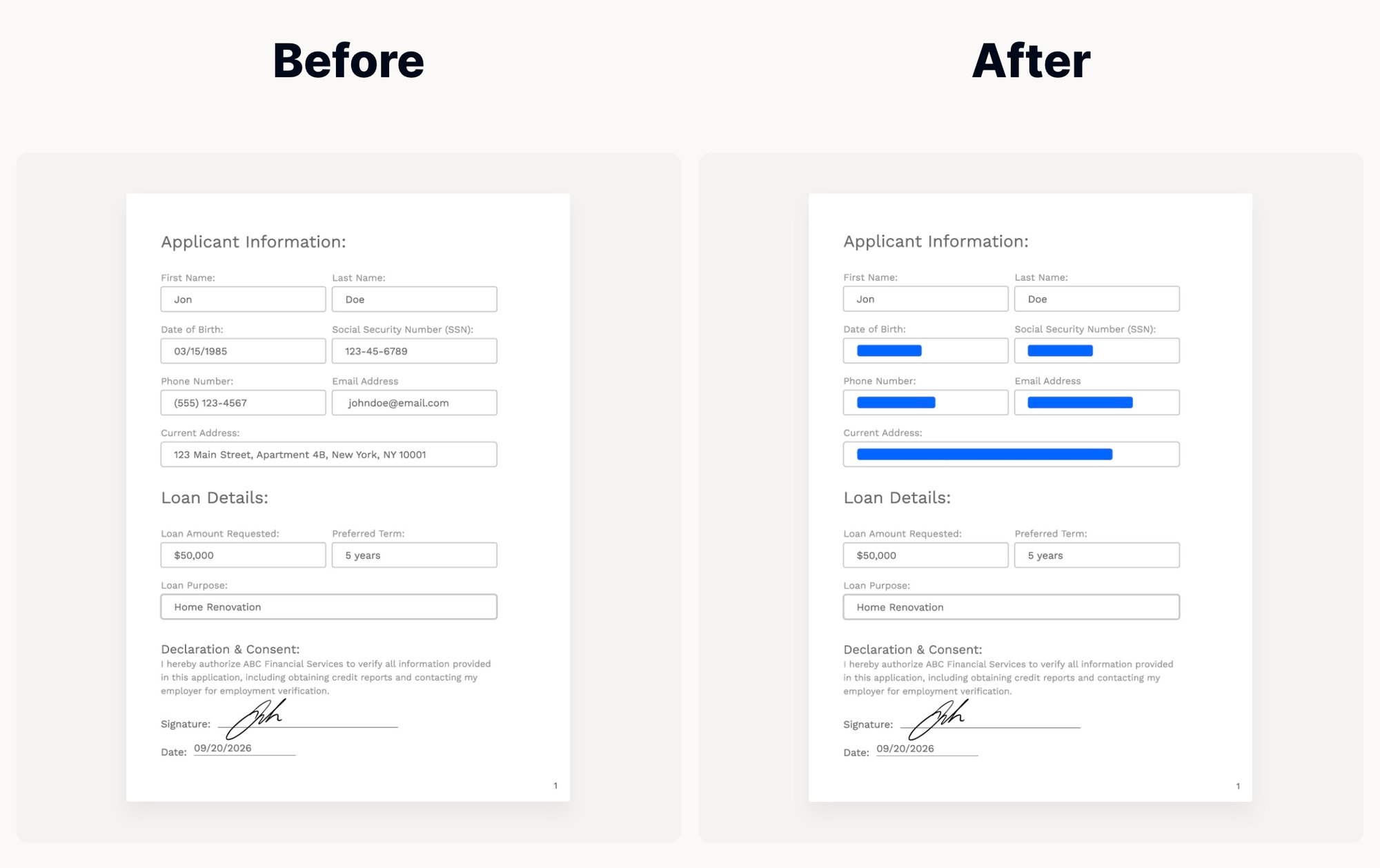Protect Sensitive Data at the Source, Wherever It Lives
Stop data leaks, prove compliance, and take back control of your unstructured data.
Confidencial helps you discover, classify, and protect sensitive content—like PII, PHI, IP, contracts, and financial files—across your cloud drives, apps, and endpoints.
What we protect
- Contracts, legal docs, source code
- R&D and IP
- PII and PHI
- Financial, HR, and operational files
Sensitive Data is Sprawling and Exposed
Most tools only discover risks. Confidencial enforces protection.
Every day, sensitive data is duplicated, downloaded, and shared without protection or traceability. It lives in email threads, PDFs, cloud folders, design files, and signed contracts. Most tools stop at visibility.
But knowing where data is isn't the same as securing it. Compliance teams can't track what they can't see or control.
60%
of breaches involve unstructured data80%
of enterprise data is unstructured, and growing fast
57%
of organizations say they lack visibility into how sensitive data is accessed
Confidencial helps you discover, classify, and protect sensitive content.
See Confidencial in action and discuss what a custom Free Data Risk Assessment would look like for your environment. In a short 30-minute session, we’ll cover:
- How we automatically discover, protect, and enable secure sharing of documents containing sensitive information, whether internally or with third parties, and share industry insights on how peers are approaching it.
- What selective encryption is and how it protects your crown jewels, down to the word, without breaking usability.
- What insights you’ll gain into your universe of unstructured data with the tailored Data Risk Assessment, and how it helps prioritize action.

Confidencial Turns Visibility into Protection
Our platform applies automatic, field-level encryption to sensitive data—based on labels, policies, or AI-powered discovery. Your documents stay protected wherever they go.
We secure the sensitive content buried inside contracts, legal agreements, medical records, R&D files, intellectual property, regulated data like PII, PHI, and HIPAA, as well as financial, HR, and operational documents.

Key capabilities
Sensitive
Data Discovery
Automatically scans your cloud and file systems to identify exposed data. No agents or migration required.
Unstructured
Data Classification
Deep analysis at the data level to classify and label sensitive content using built-in models or your existing DSPM labels.
Selective
Encryption
Encrypt just the sensitive fields or objects in each file, down to the word, paragraph, page, or pixel, leaving the rest usable, searchable, and shareable.
Data-Blind
Sharing & e-Signing
Share documents with built-in, persistent access controls and traceability, built on data-blind architecture that ensures you stay in control of your data.
Audit-Ready
Logs
Track file access, sharing events, and user activity across your ecosystem to support compliance.
Persistent
Protection
Security travels with your data, encryption and access controls stay enforced, even after files leave your systems or are shared externally.
Business benefits
Confidencial helps you secure sensitive data, simplify compliance, and collaborate securely.
- Reduce breach risk: Sensitive data stays encrypted and traceable—even after it leaves your system.
- Boost compliance posture: Simplify audits and meet regulatory mandates (HIPAA, GDPR, ISO) with built-in access controls and audit logs.
- Maximize existing investments: Turn static DSPM labels into active protection through automated, granular encryption.
- Enable secure collaboration: Empower teams to share documents and data confidently—across users, apps, and clouds—without increasing risk.

Watch Confidencial In Action

Ready to see it in action?
Get a hands-on look at how Confidencial identifies and protects your crown jewels.

FAQ
What is sensitive data protection?
Sensitive data protection refers to the discovery, classification, and encryption of information such as PII, PHI, IP, contracts, and financial files. The goal is to prevent data leaks, comply with regulations, and ensure only authorized users can access or share protected content.
How does Confidencial help protect unstructured data?
Confidencial automatically discovers and classifies unstructured data across your data storage. It applies selective encryption at the object or field level, so sensitive data is protected—without interrupting how teams work.
What’s the difference between visibility and protection?
Tools like DSPMs provide visibility into where sensitive data lives, but they don't enforce protection. Confidencial closes that gap by applying encryption, access controls, and full auditability—so your data is actually secured, not just discovered.
What kinds of sensitive data can Confidencial detect and protect?
Confidencial supports a wide range of sensitive data types including:
- Personally Identifiable Information (PII)
- Protected Health Information (PHI)
- Intellectual Property (IP)
- Contracts and legal documents
- Financial and HR records
It uses NLP and AI-powered detection—not just regex—to go beyond basic patterns.
Does Confidencial integrate with my existing security tools?
Yes. Confidencial can ingest labels and policies from your DSPM or classification tools and apply automated protection based on those rules—no need to duplicate your governance efforts.
What’s included in a Data Risk Assessment?
We’ll help you identify where your sensitive unstructured data lives, what’s exposed, and what it would take to encrypt or control it. It’s a fast, low-lift way to understand your real exposure—and how to fix it.
How fast is deployment?
You can be up and running in hours—not weeks. Confidencial connects directly to your storage and applies controls without agents or forced migration. It's built for fast time-to-value.
What is sensitive data protection, and why is it important?
Sensitive data protection safeguards critical information like PII, PHI, contracts, and intellectual property from unauthorized access or leaks. It ensures compliance with regulations and protects your organization from breaches and reputational damage.
How does sensitive data discovery work?
Sensitive data discovery uses AI-powered scanning to locate exposed or at-risk information across your cloud, file systems, and endpoints—without requiring agents or migrating data.
What’s the difference between data classification and data protection?
Data classification organizes your content by sensitivity (e.g., confidential, regulated, public), while data protection applies controls—like encryption or access policies—to secure it. Confidencial bridges both with automated discovery, labeling, and protection.
